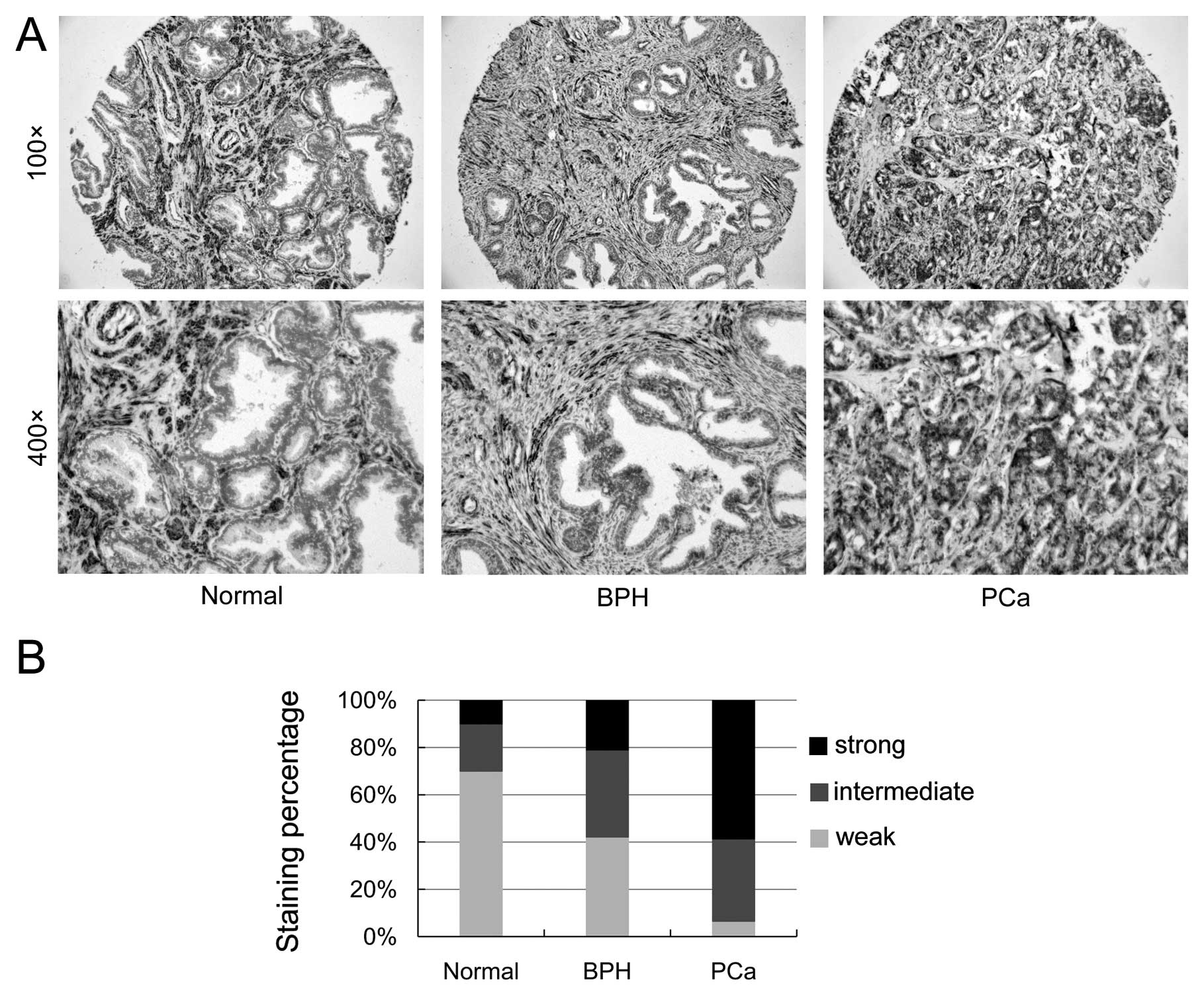|
1
|
Qi H, Fournier A, Grenier J, Fillion C,
Labrie Y and Labrie C: Isolation of the novel human guanine
nucleotide exchange factor Src homology 3 domain-containing guanine
nucleotide exchange factor and of C-terminal SGEF, an N-terminally
truncated form of SGEF, the expression of which is regulated by
androgen in prostate cancer cells. Endocrinology. 144:1742–1752.
2003.
|
|
2
|
Ellerbroek SM, Wennerberg K, Arthur WT, et
al: SGEF, a RhoG guanine nucleotide exchange factor that stimulates
macropinocytosis. Mol Biol Cell. 15:3309–3319. 2004. View Article : Google Scholar : PubMed/NCBI
|
|
3
|
Patel JC and Galan JE: Differential
activation and function of Rho GTPases during Salmonella-host cell
interactions. J Cell Biol. 175:453–463. 2006. View Article : Google Scholar : PubMed/NCBI
|
|
4
|
Van Buul JD, Allingham MJ, Samson T, et
al: RhoG regulates endothelial apical cup assembly downstream from
ICAM1 engagement and is involved in leukocyte trans-endothelial
migration. J Cell Biol. 178:1279–1293. 2007.PubMed/NCBI
|
|
5
|
Jemal A, Siegel R, Ward E, Murray, Xu J
and Thun MJ: Cancer statistics. Cancer J Clin. 57:43–66. 2007.
|
|
6
|
Pang B, Zhang H, Wang J, et al: Ubiquitous
mitochondrial creatine kinase is overexpressed in the conditioned
medium and the extract of LNCaP lineaged androgen independent cell
lines and facilitates prostate cancer progression. Prostate.
69:1176–1187. 2009. View Article : Google Scholar
|
|
7
|
Schubbert S, Shannon K and Bollag G:
Hyperactive Ras in developmental disorders and cancer. Nat Rev
Cancer. 7:295–308. 2007. View
Article : Google Scholar : PubMed/NCBI
|
|
8
|
Advani AS and Pendergast AM: Bcr-Abl
variants: biological and clinical aspects. Leuk Res. 26:713–720.
2002. View Article : Google Scholar : PubMed/NCBI
|
|
9
|
Kourlas PJ, Strout MP, Becknell B, et al:
Identification of a gene at 11q23 encoding a guanine nucleotide
exchange factor: evidence for its fusion with MLL in acute myeloid
leukemia. Proc Natl Acad Sci USA. 97:2145–2150. 2002. View Article : Google Scholar : PubMed/NCBI
|
|
10
|
Fernandez-Zapico ME, Gonzalez-Paz NC,
Weiss E, et al: Ectopic expression of VAV1 reveals an unexpected
role in pancreatic cancer tumorigenesis. Cancer Cell. 7:39–49.
2005. View Article : Google Scholar : PubMed/NCBI
|
|
11
|
Hirata D, Yamabuki T and Miki D:
Involvement of epithelial cell transforming sequence-2 oncoantigen
in lung and esophageal cancer progression. Clin Cancer Res.
15:256–266. 2009. View Article : Google Scholar : PubMed/NCBI
|
|
12
|
Engers R, Mueller M, Walter A, Collard JG,
Willers R and Gabbert HE: Prognostic relevance of Tiam1 protein
expression in prostate carcinomas. Br J Cancer. 95:1081–1086. 2006.
View Article : Google Scholar : PubMed/NCBI
|
|
13
|
Qin J, Xie Y, Wang B, et al: Upregulation
of PIP3-dependent Rac exchanger 1 (P-Rex1) promotes prostate cancer
metastasis. Oncogene. 28:1853–1863. 2009. View Article : Google Scholar : PubMed/NCBI
|
|
14
|
Dong ZY, Liu Y, Lu S, et al: Vav3 oncogene
is overexpressed and regulates cell growth and androgen receptor
activity in human prostate cancer. Mol Endocrinol. 20:2315–2325.
2006. View Article : Google Scholar : PubMed/NCBI
|
|
15
|
Linja MJ, Savinainen KJ, Saramaki OR,
Tammela TL, Vessella RL and Visakorpi T: Amplification and
overexpression of androgen receptor gene in hormone-refractory
prostate cancer. Cancer Res. 61:3550–3555. 2001.PubMed/NCBI
|
|
16
|
Ruizeveld de Winter JA, Janssen PJ,
Sleddens HM, et al: Androgen receptor status in localized and
locally progressive hormone refractory human prostate cancer. Am J
Pathol. 144:735–746. 1994.PubMed/NCBI
|
|
17
|
Edwards J, Krishna NS, Witton CJ and
Bartlett JM: Gene amplifications associated with the development of
hormone resistant prostate cancer. Clin Cancer Res. 9:5271–5281.
2003.PubMed/NCBI
|
|
18
|
Zhang H, Wang J, Pang B, et al: PC-1/PrLZ
contributes to malignant progression in prostate cancer. Cancer
Res. 67:8906–8913. 2007. View Article : Google Scholar : PubMed/NCBI
|
|
19
|
Nakatani K, Thompson DA, Barthel A, et al:
Upregulation of Akt3 in estrogen receptor deficient breast cancers
and androgen-independent prostate cancer lines. J Biol Chem.
274:21528–21532. 1999. View Article : Google Scholar : PubMed/NCBI
|
|
20
|
Ayala G, Thompson T, Yang G, et al: High
levels of phosphorylated form of Akt-1 in prostate cancer and
non-neoplastic tissues are strong predictors of biochemical
recurrence. Clin Cancer Res. 10:6572–6578. 2004. View Article : Google Scholar : PubMed/NCBI
|
|
21
|
Yamaki N, Negishi M and Katoh H: RhoG
regulates anoikis through a phosphatidylinositol 3-kinase-dependent
mechanism. Exp Cell Res. 313:2821–2832. 2007. View Article : Google Scholar : PubMed/NCBI
|
|
22
|
Yang L, Lin HK, Altuwaijri S, Xie S, Wang
L and Chang C: APPL suppresses androgen receptor transactivation
via potentiating Akt activity. J Biol Chem. 278:16820–16827. 2003.
View Article : Google Scholar : PubMed/NCBI
|
|
23
|
Lin HK, Yeh S, Kang HY and Chang C: Akt
suppresses androgen-induced apoptosis by phosphorylating and
inhibiting androgen receptor. Proc Natl Acad Sci USA. 98:7200–7205.
2001. View Article : Google Scholar : PubMed/NCBI
|
|
24
|
Yang L, Wang L, Lin HK, et al:
Interleukin-6 differentially regulates androgen receptor
transactivation via PI3K-Akt, STAT3, and MAPK, three distinct
signal pathways in prostate cancer cell. Biochem Biophys Res
Commun. 305:462–469. 2003. View Article : Google Scholar : PubMed/NCBI
|
|
25
|
Yang L, Xie S, Jamaluddin MS, et al:
Induction of androgen receptor expression by
phosphatidylinositol3-kinase/Akt downstream substrate, FOXO3a, and
their roles in apoptosis of LNCaP prostate cancer cells. J Biol
Chem. 280:33558–33565. 2005. View Article : Google Scholar : PubMed/NCBI
|
|
26
|
Kaarbø M, Mikkelsen OL, Malerød L, et al:
PI3K-AKT-mTOR pathway is dominant over androgen receptor signaling
in prostate cancer cells. Cell Oncol. 32:11–27. 2010.PubMed/NCBI
|















